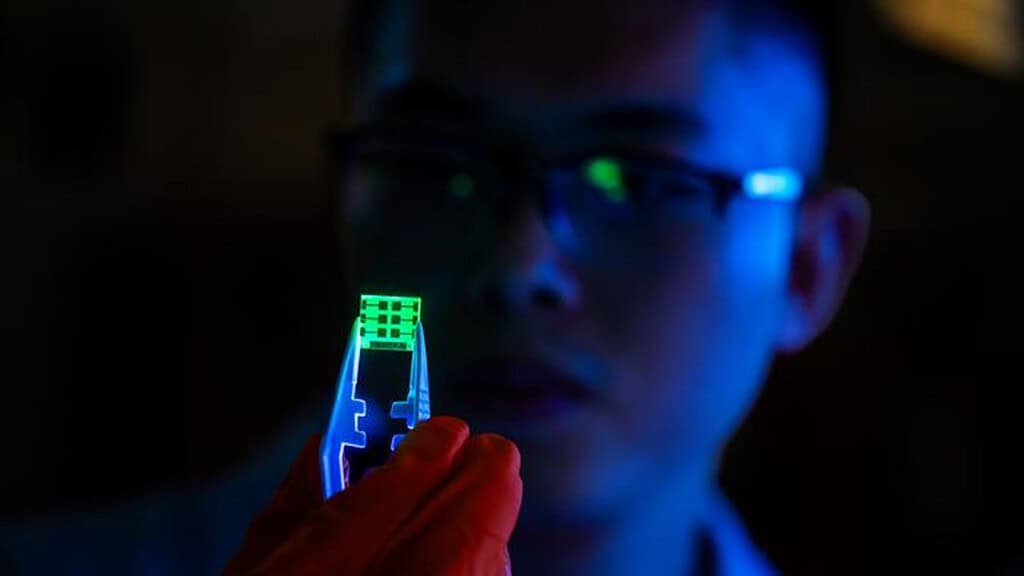
There’s a new type of LED in town. These light-emitting diodes (LEDs) are made from a material called perovskite, a calcium titanium oxide mineral that is more closely associated with cheap solar panels. The perovskite LEDs are not only highly efficient and cheap to make but could also be more environmentally friendly than their predecessors.
“Perovskite LEDs are cheaper and easier to manufacture than traditional LEDs, and they can also produce vibrant and intense colours if used in screens. I’d say that this is the next generation of LED technology,” says Feng Gao, professor of optoelectronics at Linköping University.
Perovskite LEDs
Unlike traditional LEDs, which rely on expensive and energy-intensive materials like gallium nitride, perovskite LEDs (PeLEDs) can be manufactured using simpler, less costly processes.
But for perovskite LEDs to replace their predecessors, they must overcome significant hurdles. To assess their viability, the researchers tested the environmental and economic performance of 18 different PeLEDs. These devices span a range of colors, including red, green, blue, white, and near-infrared.
The researchers found that PeLEDs exhibit excellent environmental performance, comparable to that of mature organic LEDs (OLEDs). However, they also identified key areas where improvements are needed to make PeLEDs truly sustainable.
To understand the full impact of PeLEDs, the researchers conducted a comprehensive life-cycle assessment (LCA). This approach considers every stage of a product’s life, from the extraction of raw materials to its eventual disposal. The study found that the environmental impacts of PeLEDs primarily stem from the inputs of substances and electricity during production. Raw materials, particularly organic cleaning solvents like acetone and isopropanol, are particularly impactful.
Extending Lifespan
The researchers estimate that PeLEDs should last at least 10,000 hours to offset their environmental impacts. The best perovskite LEDs currently last only a few hundred hours. Getting 10,000 hours is a challenge at the moment, but one that is achievable with further technological advancements.
“The development of perovskite LEDs is accelerating, and their life expectancy is increasing,” says Muyi Zhang, a PhD student at Linköping University.
Besides lighting, PeLEDs could also be used in displays, communications, and even medical devices. Last year, another group of researchers made perovskite LEDs that are a thousand times brighter than OLEDs. The cost of future PeLEDs could be around $100 per square meter, making them competitive with current OLED panels.
The study concludes that perovskite LEDs have “great potential for commercialization in the long term.” If their lifespan can be extended, they could not only match but surpass traditional LEDs in terms of cost and environmental impact.
The findings appeared in Nature Sustainability.






